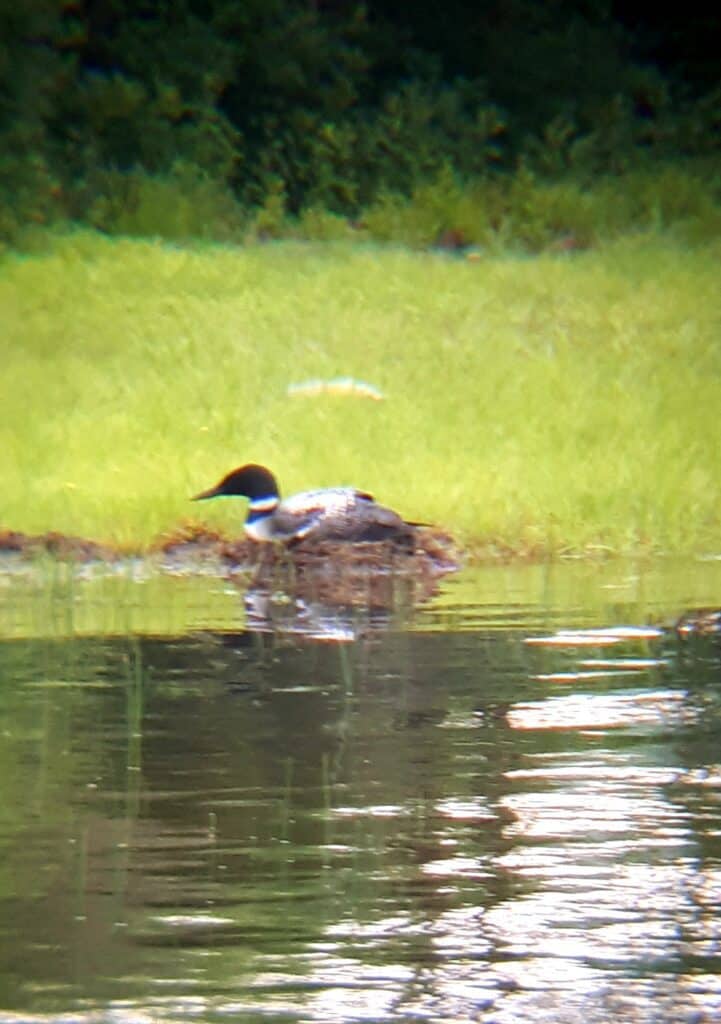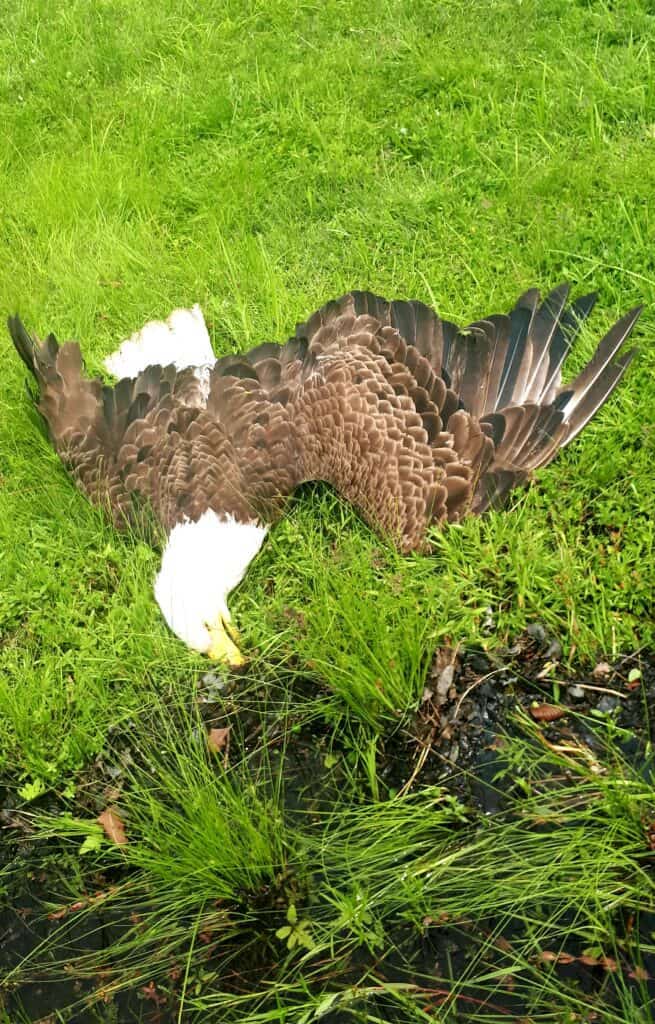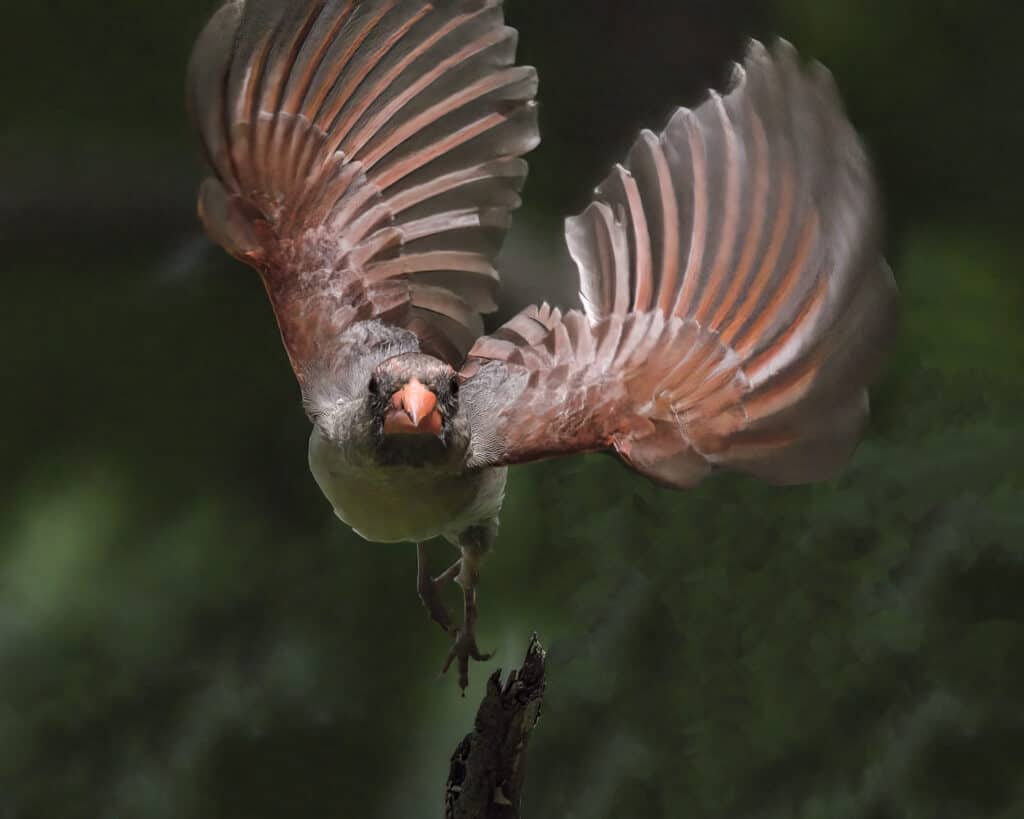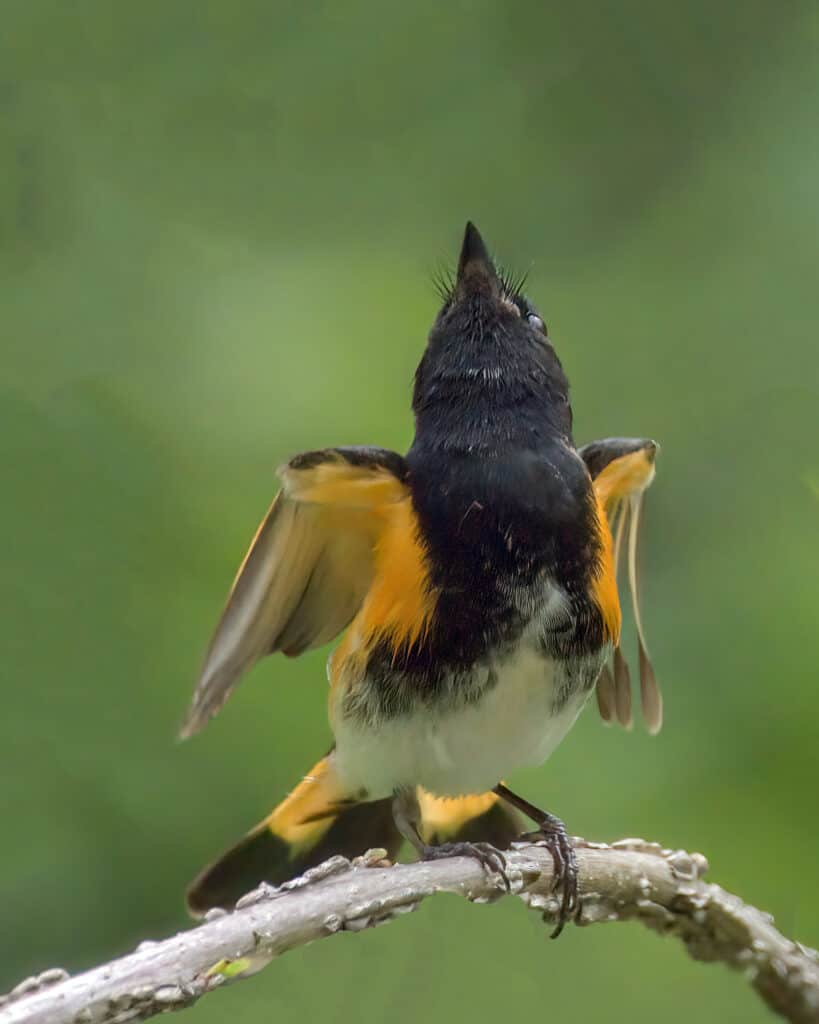I witnessed a very interesting encounter yesterday, July 20, between Common Loons and a Bald Eagle and, although it was not in the Kawarthas, I thought you might like to hear about it. My in-laws own a cottage on Papineau Lake, north of Bancroft, and my family spent the last two weeks there. There was a loon nesting on the shore in front of the cottage when we arrived, visible from our front window, and we spent quite a lot of time watching them and eagerly anticipating the eggs hatching. We also noticed a bald eagle fly over several times; it was keeping a close eye on the nesting loons as well. We were beginning to think they might not hatch at all, but on the day we were due to leave we saw one loon chick swimming beside the nest with its parent. Within an hour or two, when both parents were swimming close to the nest with their chick, the eagle returned. It swooped down towards the loons and I thought that would be the end of the chick. However, I then saw the eagle make its way to shore while all three loons were still swimming around, calling frantically. The eagle stood onshore for a minute or two and then collapsed. After waiting a bit to be sure the eagle wasn’t going to attack me, I approached it. It was still breathing at first but it died quite quickly. When I turned the eagle over there was blood on its chest, and a puncture wound, presumably from the loon’s bill. I have come across one other account of a loon killing a bald eagle, but no one saw it happen; they found a dead eagle floating beside a dead loon chick and performed a necropsy on the eagle that showed a stab wound consistent with the size of a loon’s beak. Have you ever heard of such a thing happening before? I have attached some pictures of the eagle. Danni Dickson
COMMENTS FROM TIM DYSON: I have heard of this before – only once – and I’ll bet it is the same account that Danni had come across. I would guess, however, that it has happened more than once (or twice, now) since loons seem to be somewhat routine prey for Bald Eagles, not only when nesting, but also in early winter and I would suspect at just about any time of year for that matter.
Nesting –
In 1984 while on a road trip from Ottawa-to-Vancouver, a friend and I chose Quetico Provincial Park as one of our overnight places to pause along the long journey. The park, at the time, was full of Bald Eagle nests, and Osprey too. The park ranger at the time (Shan Walsh) offered us his canoe in the evening – finding out through conversation that we were bird, and especially “raptor” people – to paddle out to an island to have a closer look around a Bald Eagle nest site there.
It was late August, and the young ones had long since fledged, so disturbance would not be a problem if we walked around beneath the huge White Pine that held the eagle nest. Not only were there identifiable chunks and pieces of prey remains that one would expect to find -heads, tails, fins, and spines of various fishes, and wings, feathers, and various body parts of mergansers -but there were also many feathers and a few parts of loons among the “table scraps” left behind by a summer of eagles raising a family. I remember at the time, being a little surprised by the loon remains, and also the number of them (there could have been three or four or more if one was to gather it all up and attempt a reconstruction).
This was my first introduction to loons as prey for eagles. Apart from a few on the west coast decades ago, I’ve not examined prey items beneath an eagle’s nest since but would expect that loons would also be fair game for eagles anywhere that their ranges overlap. And, I would not be too surprised if more eagles have become injured or even killed while attempting to capture loons with young, or perhaps even while just trying to catch an adult loon while its mate is close by. I try to imagine just how precise and quick a loon would have to be in order to stab an eagle so fatally, while somehow avoiding eight needle-sharp talons with an inescapable vise-grip behind them. Very impressive to be sure, yet very unfortunate to hear of another eagle gone from the landscape, and a mature one that likely had a mate and nest nearby.
Winter –
It is not uncommon at all, for eagles to repeatedly attack loons in early winter that have lingered too late (perhaps due to injury, or not)and that have allowed themselves to become increasingly vulnerable to dangers like eagles because the amount of open water is rapidly decreasing each night as ice creeps in from all directions. It brings to mind old sayings like “sitting ducks” or “like shooting fish in a barrel”. A loon is unable to move far across a solid surface (land, rock, ice) so must stay in any available open water, and requires a very long expanse of open water in which to become airborne, as it flaps along the surface picking up speed and eventually, altitude. Once that open water space on a lake surface is reduced to a certain size, the loon is trapped. Sure, it can dive to feed itself and escape capture by swooping and hovering eagles for a while. But the loon will usually tire long before the eagle would lose patience. And yes, eagles are very patient, and will wait it out, and usually in groups when this situation presents.
Certainly, loons are well-known and likely quite frequent prey for eagles. As for eagles being fatally wounded by loons? Not very often is that kind of thing observed, I would say. It is good that this case will be documented, and I wonder if other cases can be found to exist if one were to consult wildlife rehabilitators, biologists specializing in eagles, or others who might routinely examine eagles that might have similar wounds but were otherwise healthy. I would hope that the eagle in Danni’s story would be collected and examined further.
It is interesting to see how the gypsy moth infestation is working out up here at our cottage near Parry Sound. On the oak-rich rocky ridge across our bay, the oaks have new leaves. It looks more or less like May 24 weekend. The birches and poplars are also leafing out again. I’m sure the wet weather is helping. The pines that have been eaten (only ones near the lake – most pines suffered no noticeable damage) are NOT regenerating, as one would expect. The maples (sugar, mountain, silver) and yellow birches were not eaten to any extent. There are many what I think are male gypsy moths flying about now, so I suppose the pupal stage is complete. It will be interesting to see if the viruses, fungi, and parasites quell the gypsy moth for 2022. Rob Moos
Last week, we had a Great Blue Heron catching chipmunks. This week, we have a River Otter catching moles! He paused long enough for a picture before racing off last night. It seems they both have cleaned up the west side of the condo. Gord Young, Armour Road North
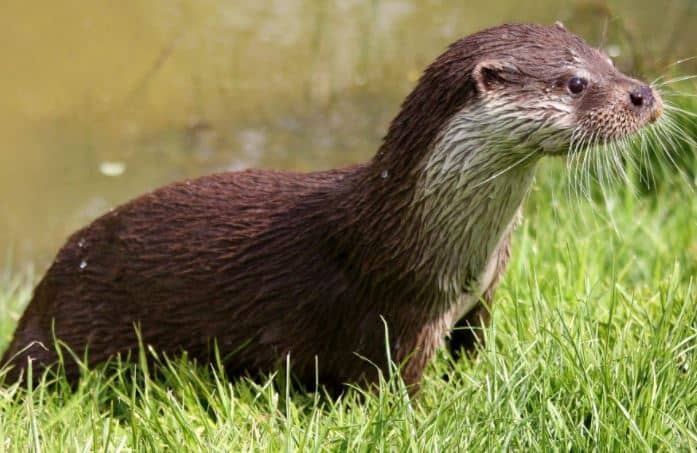
Yesterday, July 21, on my nearly daily walk in the Sherbrooke Woods I saw quite a number of mushrooms, mostly small, but more than a dozen patches of big (~ 12+ cm), rustic-looking brown ones, some with funnel-shaped caps, and one elegant white one (Amanita? I didn’t dig for the cup). Bob Stairs
Note: I think the brownish ones are Boletes – possibly a species called Slippery Jacks. It should be a great year for mushrooms with all this rain! D.M.
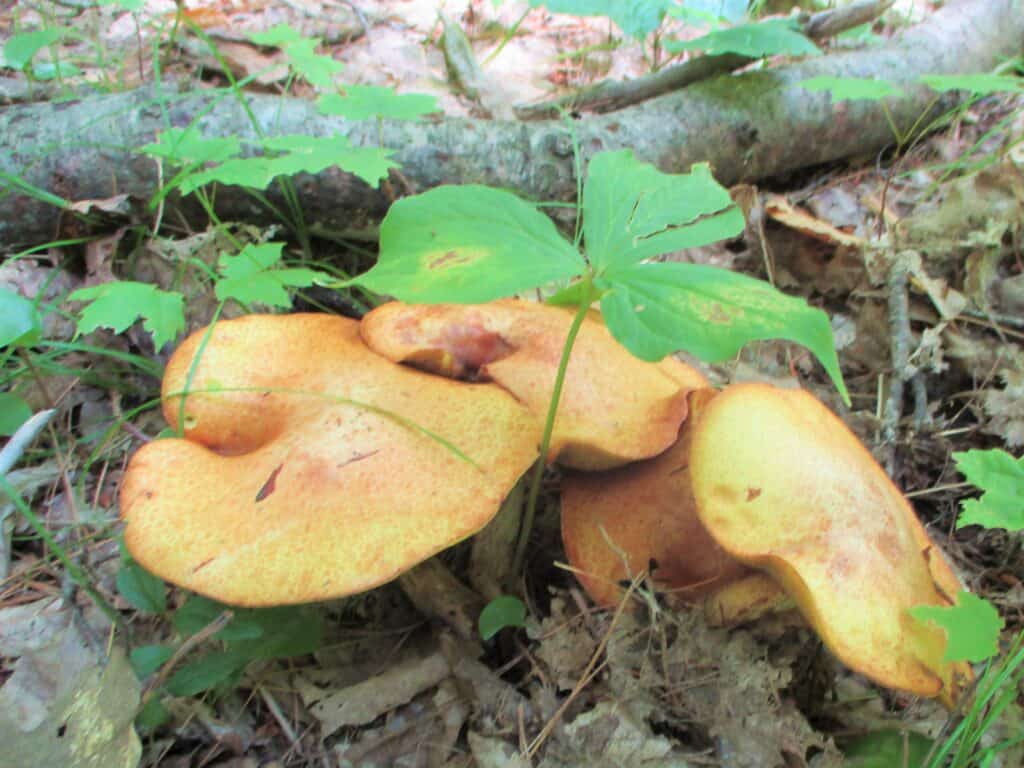
Here’s a Red-eyed Vireo I photographed on Best Road, near Mount Pleasant. Trudy Gibson
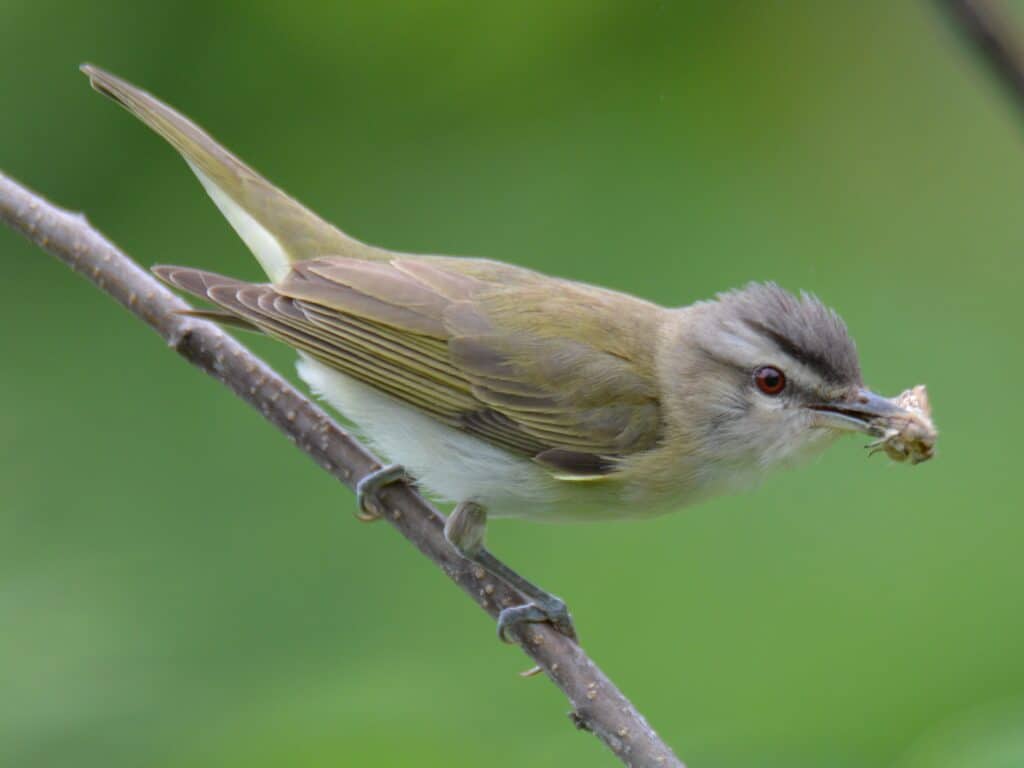
A leucistic House Sparrow 10-July-2021 in Peterborough. Trudy Gibson
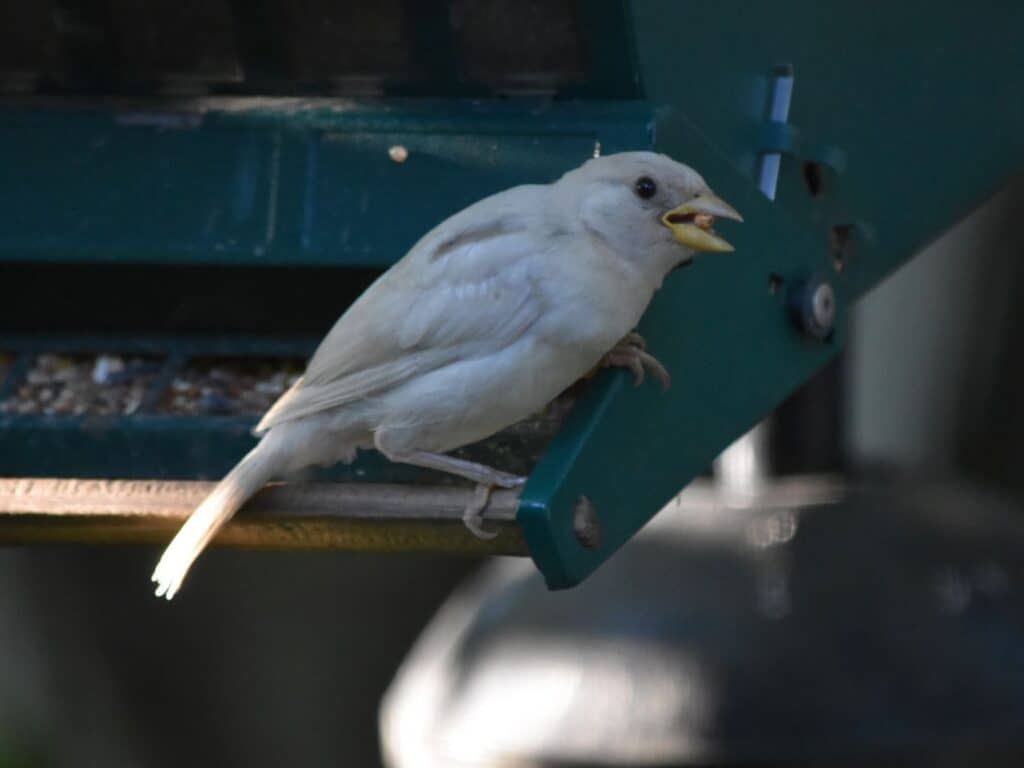
July 10 – I have some sad news about the turtles this year. Five nests have been dug up, one Snapper nest and four Painted Turtle nests. We think the culprit is a skunk, though a raccoon and a fox have been caught on camera in the night. I was that upset, I actually called an animal removal firm about the skunk but we only trapped a large male raccoon this week. And we’ve had another raccoon on camera just yesterday. Inevitable really. One can’t control nature. The snapper nest was in a new place, well up the drive towards the road and just on the edge of the gravel surface. When Peter discovered this nest on June 15 there were still eggs in it so he covered it with chicken wire weighted down heavily with rocks but the next morning the animal had tunneled from the sides and eaten the rest of the eggs. It’s obvious we needed to cover a much wider area but this was difficult on the driveway. So no hatchlings and no goslings this year. Rather sad really. Here’s hoping for a better outcome next year. Stephenie Armstrong
Today, July 22 we had a Mourning Cloak butterfly visit our hummingbird feeder. Al Slavin
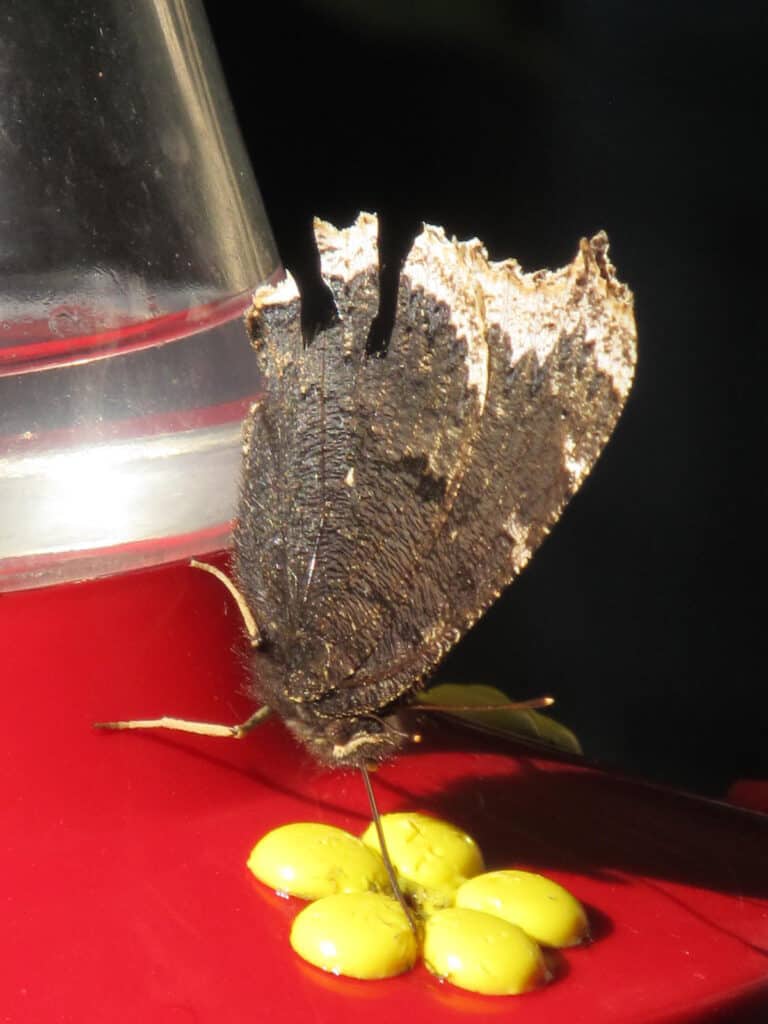
Not uncommon, but I just happened to stumble on this Mourning Dove nest in my bush as we were trimming it. Phil McKeating
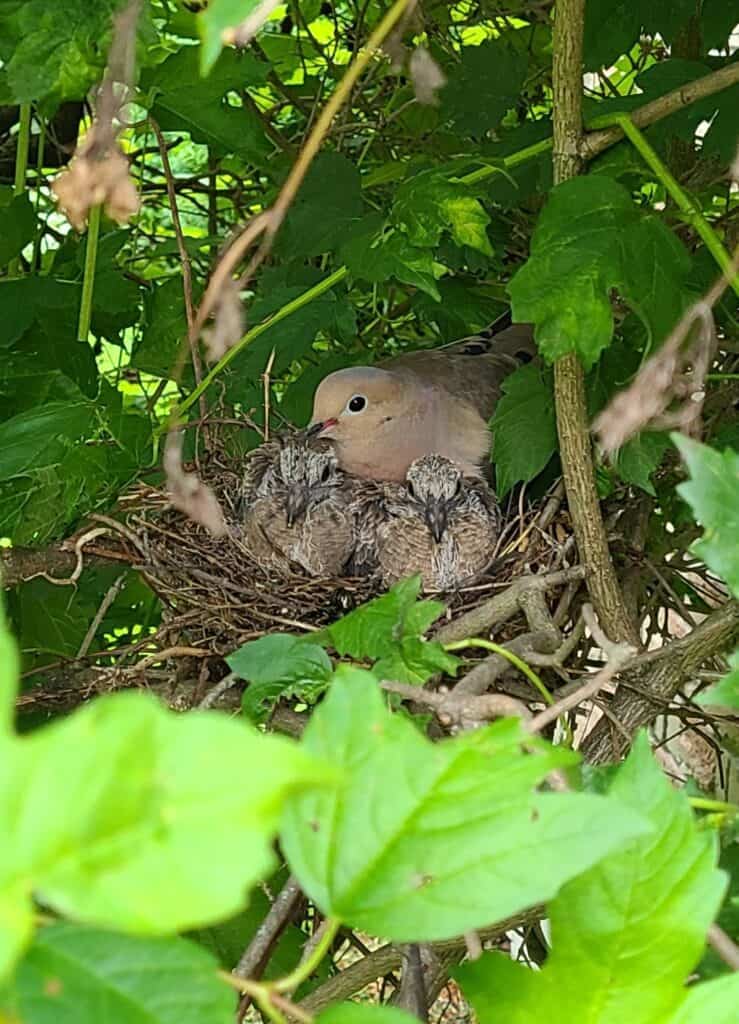
This Great Blue Heron has pretty well cleaned up the west side of the condo’s population of chipmunks.
Folks over there are doing their best to chase him off. There are a few chipmunks left, but nearly every summer the heron gets at least 85% of them there. Seems this year, he over did himself and came over to the east side. We chase him away regularly. Interestingly enough, it just took taking his picture that made him fly off. Grrrrrrreat eyesight! Gord Young, Armour Road north
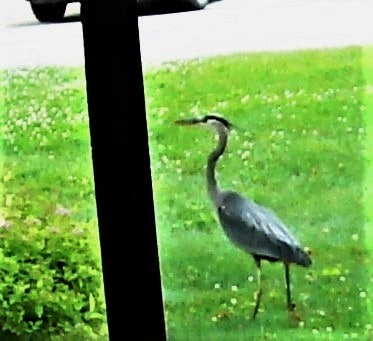
I’ve been spotting this doe White-tailed Deer repeatedly at our cottage property at Fire Route 233, Beaver Lake Road in Trent Lakes. I was curious to find out why it has a numbered ear tag. According to Brent Patterson , a research scientist at MNRF who studies wolves and deer, “we fit a deer with a radio-collar and ear tag # 876 on Feb 27 2000 in the Peterborough Crown Game Preserve, near the trail head into High Falls. It seems likely that this is the same deer. If so, she travelled about 20 km as the crow flies between winter and summer ranges. This deer was one of 5 deer collared in winter 2020 as part of a pilot study. She was fit with an experimental GPS collar equipped with a video camera that took short bursts of video throughout the day. The collar released automatically at the end of its life cycle last summer and we are currently going through the videos from this collar as part of a study into contact rates among deer. Data on movements between summer and winter ranges, in addition to this fine-scale data on contact among deer, will help inform on potential spread of diseases like chronic wasting disease (CWD) should it ever occur in Ontario. We didn’t conduct any additional deer collaring in 2021 owing to covid-19, but intend to radio-collar >40 deer in the general area this coming winter.” Cindy Bartoli
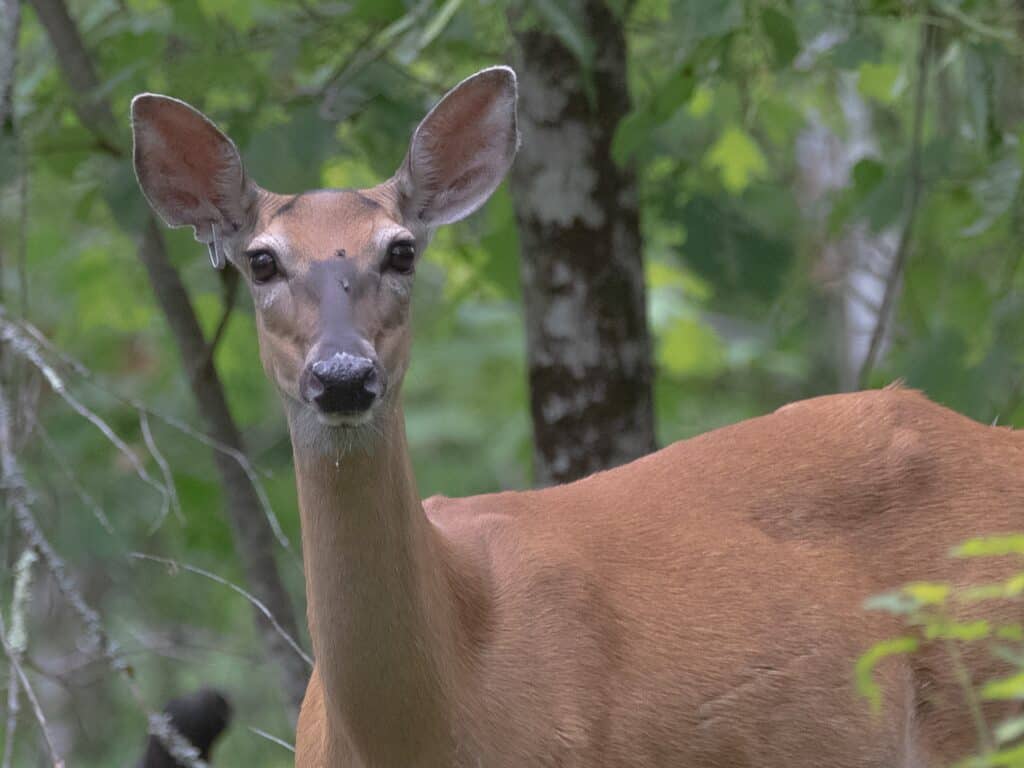
Here’s some photos of a female Northern Cardinal and a male American Redstart that I photographed in Campbellford on July 1, 2021 Donald Munro, Campbellford
